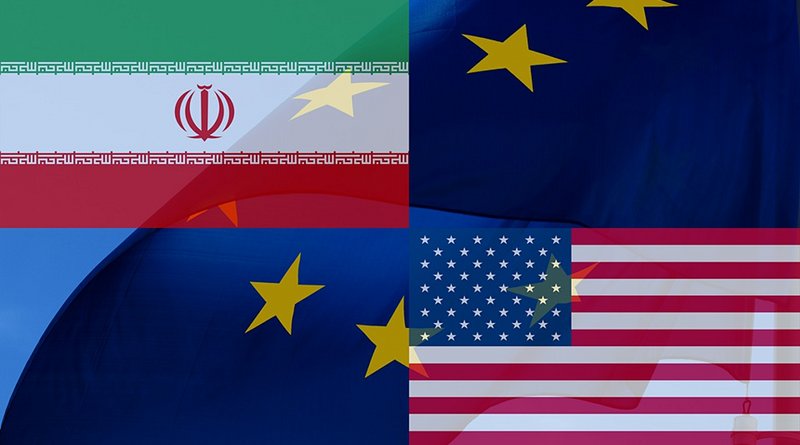
In his address to the UN General Assembly this week, President Biden stated he was prepared to come back to the JCPOA provided Iran accepts to do the same. But what is JCPOA and what is the significance?
The Joint Comprehensive Plan Of Action is an agreement on the Iranian nuclear program reached in Vienna on 14 July 2015, between Iran and the P5+1 (the five permanent members of the United Nations Security Council—China, France, Russia, United Kingdom, United States—plus Germany) together with the European Union.
The agreement was supposed to end worldwide concern on Iran’s secret nuclear program through curbing the program against waiving international sanctions on the country because of its secret nuclear activities.
The program’s very existance was first revealed in 2002 by the Iranian opposition National Council of Resistance (NCRI) forcing the country to accept, through the intervention by the IAEA, international surveillance over its nuclear program kept secret for nearly two decades.
On 8 May 2018, Donald Trump announced US withdrawal from JCPOA, judging the agreement too lean on Iran’s activities and asking for a tougher agreement covering Iran’s support for militant groups in the region and its development of ballistic missiles. U.S. sanctions on countries trading with Iran, which were supposed to stop according to the agreement, came back into effect in November 2018.
In response, Iran began backstepping from its own engagements according to the agreement, which led to serious international concern towards probable nuclear proliferation.
Joe Biden has said he wants to rejoin JCPOA, but hints at a modified, broader version for 2021 covering other aspects of Iran’s “rogue behavior”. Iran insists they want the same deal and nothing new. Indirect negotiation between the two in Vienna has thus lingered for months and now Iran has a new, hard-line president, further complicating the affair.
But according to the head of Iran’s Chamber of Commerce, the country’s GDP has free falled 57% during the last three years! with the international sanctions playing an important role apart the general mismanagement of the country’s economy. So trying to put the JCPOA back to life by making the US come back is essential for Iran to lift the crippling sanctions.
I try to presents elements helping to see possible outcomes to the crisis. I do not intend to discuss whether the JCPOA will be revived, nor develop a judement on which pathway is more probable; but instead seek to examine Iran’s possible economic and trade strategies with or without the agreement.
Scenario A: An agreement is reached, reviving the JCPOA.
In the most optimistic case, let’s assume that all parties will return to the 2015 JCPOA, favored by the Iranian regime, not the 2021 JCPOA, the United States’ and Europe’s favorite.
To attain this, Iran is putting a lot of pressure on the international community through its threats to elevate its enriched Uranium stockpile and increase its Uranium concentration level.
In the case of a 2021 JCPOA, Iran gives up its nuclear weapons and missile development program, ends its interference and influence in the region, and improves the state of human rights. In this scenario, the Iranian regime also signs the Financial Activity Task Force (FATF) agreement against global money laundering and terrorist financing to comply with international banking regulations.
In the most optimistic of the two cases, Iran will be able to sell its oil at a capacity of at least 2.5 million barrels per day as before. Since Iran’s economy is primarily run by the Islamic Revolutionary Guards Corps (IRGC) and institutions affiliated with the Supreme Leader, profits are the focus, not the needs of the Iranian people. Instead of investing in local manufacturing, goods are imported from China and other countries. Since 2016, we are witness to nationwide anti-regime demonstrations in more than 160 cities across Iran initiated by poverty and inflation.
Although temporary economic relief will exist if the JCPOA is reinstituted, the national economy is severely damaged, possibly beyond repair. There is no nationally codified document in Iran identifying priorities with a scientific and program-based approach, given the level of Iran’s industrial development technology and roadmap.
Apart short-termed crisis control, money thus gained would be spent on regional projects aiming regional strategic supremacy in Iraq, Yemen, Syria and Palestine according to the regime’s long-term expansion and survival doctrines.
Scenario B: The JCPOA will not be revived, and the pressure due to sanctions and increasing international restrictions will continue on Iran.
In this option, Iran officially withdraws from JCPOA and will try to upgrade its nuclear program as a threat to the world to ensure its survival. Military action, however limited at first, would then be likely from outside sources. Iran’s economy, which is currently on the verge of collapse, especially after the coronavirus spread, would suffocate in inflation and rising unemployment.
Colossal corruption and geopolitical tensions, especially with Israel but also with Arab neighbors, along with internal instability, will continue. Such economic and political instability and legal risks affiliated with investment in Iran will repel any foreign investors and further deteriorate the economy.
Harsh economic conditions would likely lead to popular uprisings like in 2017, 2018 and 2019. Internal repression has to increase in tandem with foreign interventionalism putting the regime in a delicate position given its limited human ressources.
Scenario C- Status-quo:
Highly unlikely as there is practically no economy left in the country. In the last 50 years, the share of productivity in Iran’s economic growth has been zero. In many other countries, this share is above 30%. When the percentage of productivity in economic growth stays so low for so long, it means the overall financial structure of the country is in serious trouble. Statistics suggest much of the country’s capital is leaving the country and is unlikely to return. At present, liquidity in the twelve months ending by August 2021 has grown by 39.1 percent. Unsupported money is printed to compensate for the budget deficit.
Source: Published in Eurasiareview

